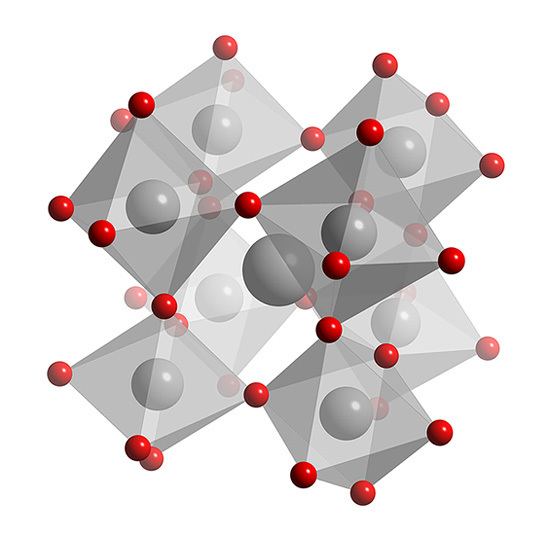Formula CaTiO3 Molar mass 135.943 g/mol Boiling point 3,000 °C | Density 3.98 g/cm³ Melting point 1,975 °C Appearance white powder | |
 | ||
Microwave experiment 6 and 7 tungsten and copper calcium titanate
Calcium titanate, also known as calcium titanium oxide, is an inorganic compound with the chemical formula CaTiO3. As a mineral, it is called perovskite, named after Russian mineralogist, L. A. Perovski (1792-1856). It is a colourless, diamagnetic solid, although the mineral is often coloured owing to impurities.
Contents
- Microwave experiment 6 and 7 tungsten and copper calcium titanate
- Is copper calcium titanate a fire or explosion risk raw footage full test
- Synthesis
- Structure
- Applications
- References
Is copper calcium titanate a fire or explosion risk raw footage full test
Synthesis
CaTiO3 can be prepared by the combination of CaO and TiO2 at temperatures >1300 °C. Sol-gel processes has been used to make a more pure substance, as well as lowering the synthesis temperature. These compounds synthesized are more compressible due to the powders from the sol-gel process as well and bring it closer to its calculated density (~4.04 g/ml).
Structure
Calcium titanate is obtained as orthorhombic crystals, more specifically perovskite structure. In this motif, the Ti(IV) centers are octahedral and the Ca2+ centers occupy a cage of 12 oxygen centres. Many useful materials adopt related structures, e.g. barium titanate or variations of the structure, e.g. yttrium barium copper oxide.
Applications
Calcium titanate has relatively little value except as one of the ores of titanium, together with several others. It is reduced to give titanium metal or ferrotitanium alloys.
